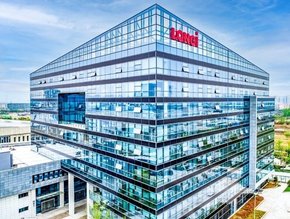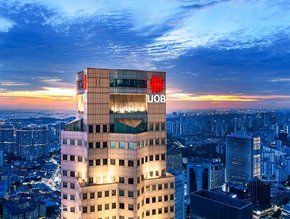Digital evolution: survival of the fittest in utilities

The utilities sector has famously lagged behind others in adopting new technology. Uptake of technology trends such as AI has traditionally been slow and infrastructure underlying the industry as a whole is still made up of cumbersome legacy systems.
The past year has set the stage for major change in 2021: COVID-19 has highlighted the need for greater agility, customer intimacy and efficiency – now top priorities for the sector. Utilities providers have had to adapt to unprecedented change, and have been faced with a choice: embrace digital transformation, or eventually be left behind.
From chatbot creation to software innovation, having a digital strategy in place to reduce costs and better serve customers has been key to business survival. But how far has the industry come over the last 12 months, and what can be expected of the year to come?
Enhanced customer relationships
The need for traditional suppliers to update their operating models was clear long before the pandemic. Smaller, digitally agile players like Octopus and Ovo were already grabbing a significant proportion of market share due to their effective leveraging of various digital channels. Evolving from the traditional customer call centres towards a more efficient online model revealed a whole host of benefits, from streamlined costs and enhanced customer satisfaction, to heightened access to and understanding of customer information.
While it was previously difficult for leaders to make a solid business case for investment in customer facing technology, Covid-19 has been a catalyst for greater change in this area. The need for high customer engagement levels has never been more crucial. Over lockdown, we saw demand for power falling as much as 20%, and while it has slowly crept up towards pre-Covid levels, the balance in supply and demand has shifted considerably.
Now as we cautiously approach the tailend of the pandemic, we’re seeing domestic customers using more energy due to working from home, and industrial and commerce using less energy. Customer engagement is vital as the market continues to be volatile, to help clarify customers’ understanding of bills, provide self-serve management of accounts, and support households and businesses that are struggling to meet payments. This will also help to prevent customer churn, especially as the price of energy rises and customers think about looking at tariffs elsewhere.
Automation, artificial intelligence and digital tools can all contribute to higher levels of customer engagement and effective customer service capabilities. Not only do these offer a seamless digital experience, they can also help reduce customer service costs. We’re already seeing large energy providers make bold investments in modern digital platforms, for example ‘British Gas Lite’, a move by Centrica to utilise a leading retail energy platform in the UK, and E.ON, which is restructuring its online platform by forming a strategic partnership with Octopus Energy’s tech arm.
As market competition grows fiercer, and the transition to digital more embedded, companies must enter the new year continuing to build on these digital capabilities. Over the next two to three years, we can expect to see more established energy suppliers making bold digital moves to outpace each other. This is not only about countering the growth of newer suppliers, but also about protecting their share from large oil and gas companies, especially as electric vehicles become more popular.
Facing disruption
The past months have seen industry wide disruption on an unseen scale. In particular, utility organisations have faced disruption of their supply chain for asset management and construction work. This, along with the suspension of almost all asset maintenance work, led to a backlog of tasks when lockdown eased. The sector will likely still be dealing with the fall-out from these delays into the new year, so the use of scenarios to re-plan and reprioritise asset maintenance and construction work to minimise longer-term disruption has never been more important.
The use of data and analytics have played a huge role in enabling utilities to respond to this challenge. Having experienced the challenges brought about by a string of lockdowns, suppliers will be prioritising business resiliency, not only to COVID-related disruptions but also other future ‘black-swan’ events. Going forward, utilities companies will be investing in this data-driven technology to preserve business continuity as much as possible.
Remote working, a permanent change
For utility organisations, the shift to remote working certainly wasn’t straightforward. As traditional laggards in the adoption of new tech, working from home presented a backlog of connectivity issues. Technologies such as the cloud, as well as digital collaboration tools, have proved critical.
With productivity increases and work-life balance benefits clear, organisations across all sectors are fundamentally rethinking the workplace and how people work. In 2021, utility organisations should be reassessing how their operating model impacts different teams, from those working in power stations, to those in offices or out in the field. Doing so will help to balance both efficiency and employee experience in the new normal.
As we continue working remotely for the foreseeable future, it’s also crucial for utility companies to have the right support mechanisms in place for staff, to ensure their safety and well-being. Staff engagement platforms that support well-being, or apps and wearables that help monitor health and well-being of those out in the field are essential, and will become a key prioirity for organisations who have not already made use of these tools.
Industry-wide progress
Regulatory intervention and transformation across the entire utilities sector will significantly affect the speed at which digitalisation takes place. Ofgem’s switching programme, for example, will soon see the amount of time taken to change suppliers reduce from 21 days, changing business processes, IT systems, and consumer behaviour. Businesses will need to ensure their digitalisation strategy is firmly in place in order to cope with a significantly different industry landscape next year.
New products and solutions will also drive further digitisation, providing greater insights for suppliers into customer usage – for example the potential of smart meters.
The year ahead
Digital transformation has been thrust upon utility organisations in a way no one could have anticipated before this year. Sticking with legacy tech is simply not an option for companies who want to succeed. The risk of losing millions and being completely overshadowed by more digitally savvy suppliers is far too high.
Although there may be light at the end of the tunnel, business disruptions and economic fallout are set to continue. Companies must therefore repeatedly assess their current operations and adapt to the ever-changing market. The transition to digital is all encompassing – affecting the way suppliers think, work and engage – but the sector will become far more resilient and innovative in the long run.
For more information on business topics in Asia Pacific, Australia and New Zealand, please take a look at the latest edition of Business Chief APAC.






